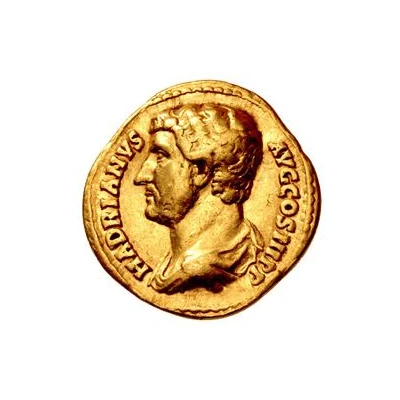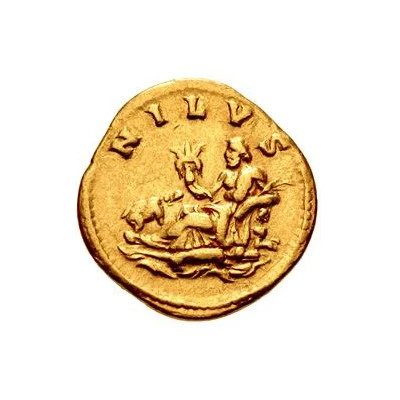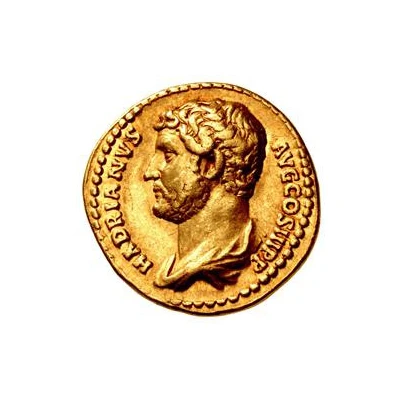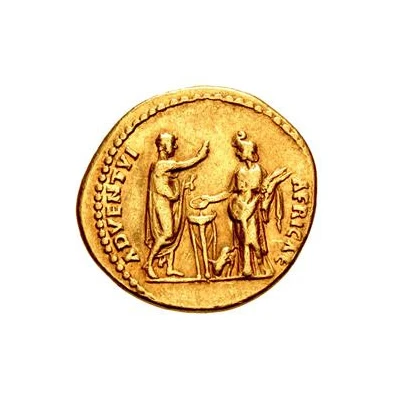Aureus - Hadrian NILVS; Nilus
| Gold | 7.27 g | 19.5 mm |
| Issuer | Rome › Roman Empire (27 BC - 395 AD) |
|---|---|
| Emperor | Hadrian (Publius Aelius Hadrianus) (117-138) |
| Type | Standard circulation coin |
| Years | 130-133 |
| Value | 1 Aureus = 25 Denarii |
| Currency | Denarius, Reform of Augustus (27 BC – AD 215) |
| Composition | Gold |
| Weight | 7.27 g |
| Diameter | 19.5 mm |
| Shape | Round (irregular) |
| Technique | Hammered |
| Demonetized | Yes |
| Updated | 2024-10-05 |
| Numista | N#256033 |
|---|---|
| Rarity index | 100% |
Reverse
Nilus reclining left, holding cornucopia and reed; in water below, crocodile and hippo.
Script: Latin
Lettering: NILVS
Translation:
Nilus.
Nile.
Comment
Source: Online Coins of the Roman Empire (OCRE)Interesting fact
The Aureus - Hadrian (NILVS; Nilus) coin was minted during the reign of Emperor Hadrian (117-138 AD) and features an image of the emperor on one side and the goddess Venus on the other. The coin was used as a form of currency throughout the Roman Empire and was considered a symbol of wealth and power. Interestingly, the coin's obverse (front side) features the image of Hadrian wearing a radiate crown, which was a symbol of his divine status as a god-emperor. The reverse (back side) of the coin depicts Venus standing on a rocky outcropping, surrounded by sea creatures and holding a trident, which represents her association with the sea and her role as the protector of the Roman navy. Overall, the Aureus - Hadrian (NILVS; Nilus) coin is a rare and valuable artifact that provides insight into the economic, political, and religious practices of ancient Rome.



